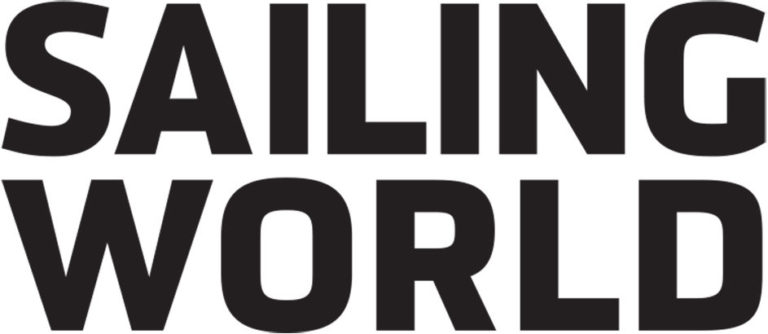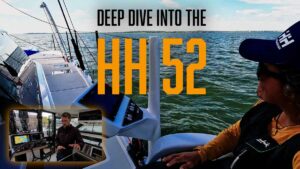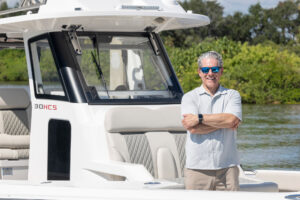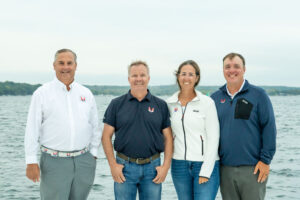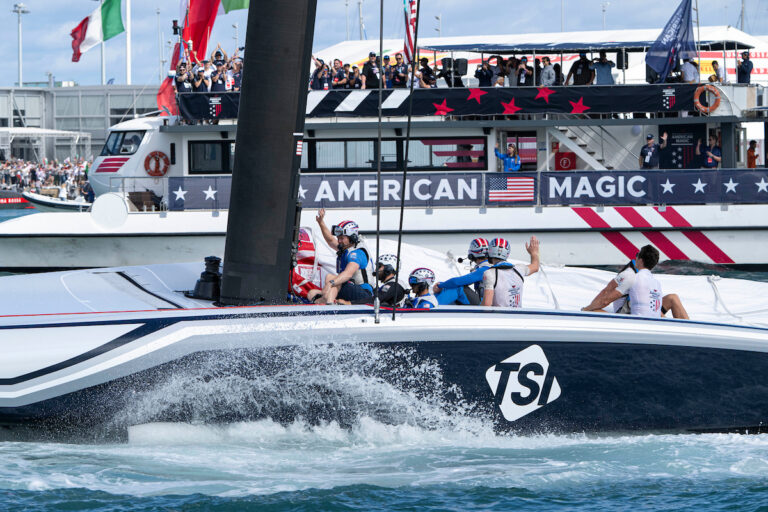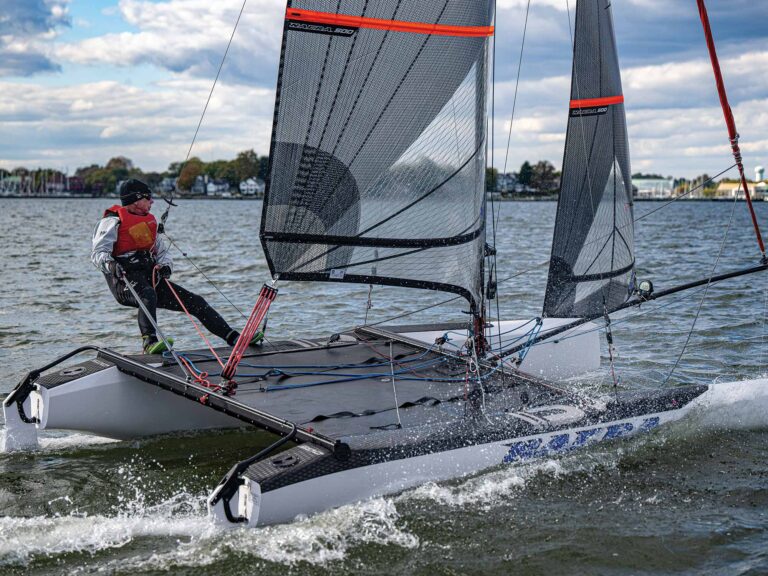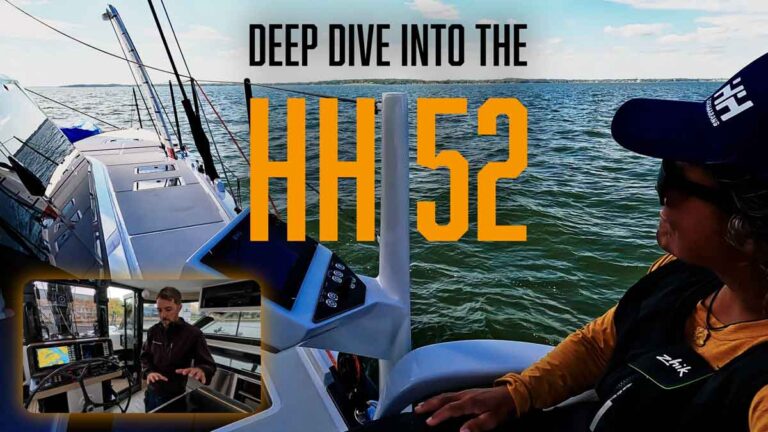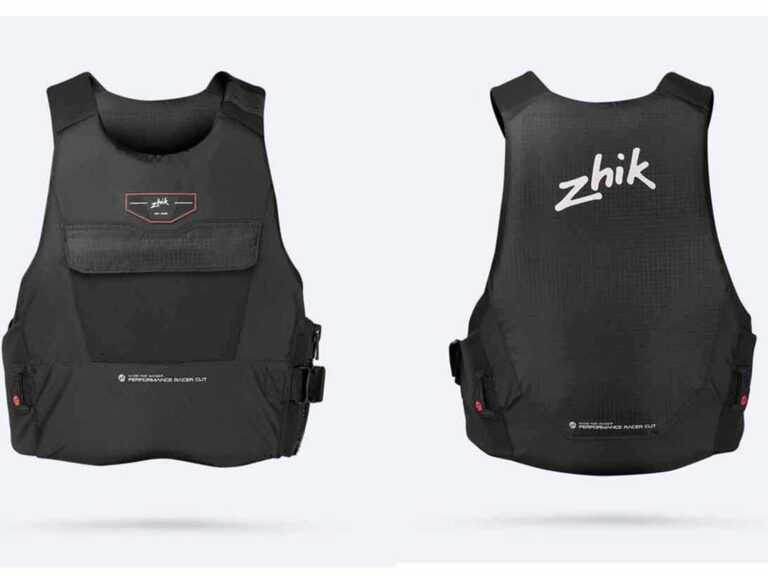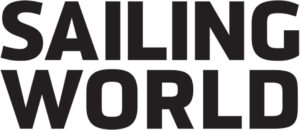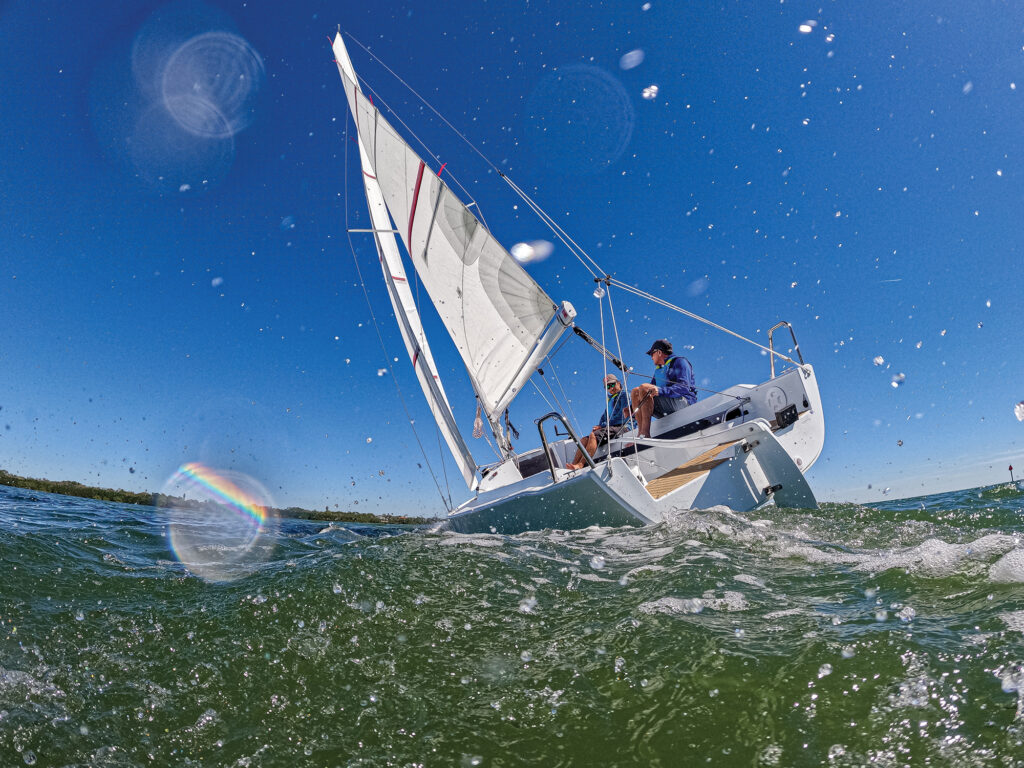
The first nominee on the list for Sailing World’s Boat of the Year judging team in February is the J/7, which J Boats unveiled in the dead of Rhode Island’s winter in December 2024, ice on deck and all. Here in St. Petersburg, basking in its slip at the SkyBeach Resort, it looks better already. On board to brief us is Chris Tait, a dealer from the Northeast who’s handling the J/7’s Florida roadshow. He’s sold a lot of J Boats over the years, but this one, he tells us, has everyone’s attention. Small is the new big.
“This boat really fills a void in the marketplace for a small keelboat daysailer,” Tait says. “It’s a simple family boat, a first-time boat, a club boat, a program boat. It ticks a lot of boxes.”
It’s amazing how many people the boat’s cockpit swallows and still sails impeccably, he adds, drawing our attention to 8 feet of comfortable seating. There are even seats aft of the end-boom mainsheet bridle. The J/7 is indeed spacious, and the coamings are angled outboard, which makes them comfortable when sitting inboard or on the rail for a better view.
“You want to hike so bad, but you don’t have to,” Tait says. “We’re all used to hiking on a boat, but this is just as comfortable sitting back, chilling out, and enjoying the sail.”
US yacht clubs are increasingly turning to club-owned fleets to attract and retain members; the J/7, Tait says, encompasses all of what they are asking for: a simple and durable boat with low offseason maintenance. Belowdecks on the J/7 is glossy white gelcoat, a 6-foot V-berth, and 5-foot settees. There’s no battery, electronics or facilities. There’s not a single piece of wood on the boat or a redundant piece of hardware.
For the jib, 2-to-1 sheets lead to Harken SnubAir winches. The mainsheet cascades to a swivel cleat on a post, and the Dyneema backstay splits and snap-shackles to the cockpit walls. The rig is a deck-stepped (hinged) aluminum spar on a compression post. There’s a ring on the mast for symmetric sailing and an optional bolt-on prod for an asymmetric spinnaker. There are no downwind sails for our demo, but the judges sure wish they were.
Keeping it simple also keeps the price down for club-fleet purchases, and to that end, we’re told that the China-built and US-assembled base-boat price is just shy of $55,000, excluding sails. The full sail-away package brings it to $70,000 with a trailer (there’s a single lift point for hoists, and the boat weighs 2,300 pounds).
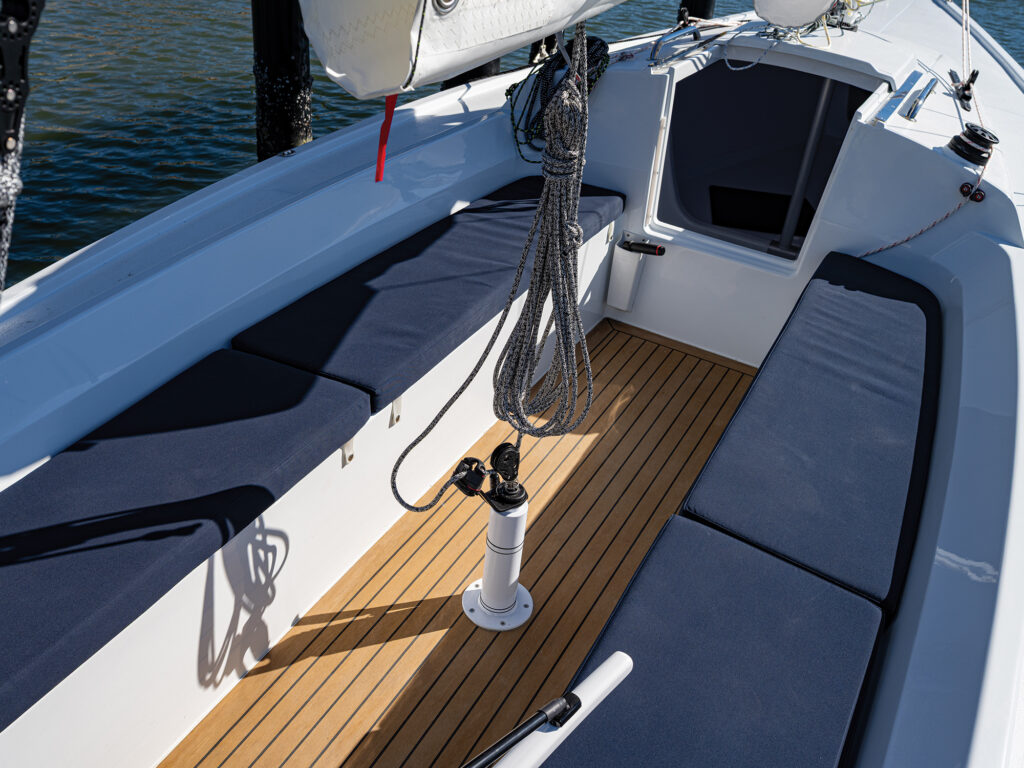
Shallow draft was high on the priority list for designer Al Johnstone, and the result is a 3.8-foot trapezoidal-shaped bulb keel, ideal for skinny coastal waters and inland freshwater playgrounds. We’re happy to have it when sailing through Tampa Bay’s shifty shoals.
With the boat brief complete, the judges exit the marina under mainsail and into a 10-knot northerly that lays the water board flat.
BOTY judges Erik Shampain and Mike Ingham promptly have it gliding upwind, wishing they had another J/7 to line up against. It’s in their nature to tweak, so they fidget with leads and controls and their weight placement, and soon settle in and relax. There’s not much they can do but sit back and enjoy the sail. That is the point.
Before turning downwind, Ingham spins the boat through a mock 720 penalty turn, and the boat circles its length. The boat’s straight and deep rudder blade glides it through the turns, even without any kinetic assist, confirming that it would be a responsive boat for club-level team- and match-racing skirmishes.

Once they turn downwind, Shampain instinctively moves forward and crouches at the shrouds to wing the jib, wishing instead he had a spinnaker sheet in hand. Still, the boat tracks nicely dead-downwind with a slight weather heel, responding to subtle weight movements.
“I really like the idea of a short sprit and a furling spinnaker,” Shampain says with a grin after a few minutes of fighting the jib clew. “Or a jib boom. But, definitely, a spinnaker is a must.”
Ingham, who has spent more time on the helm, notes after sailing that the boat “has really nice stability and steers really well, even from a dead-stop. There’s always flow on the rudder, so I can see how this would be a really fun club racing boat. It’s pretty darn simple.”
